News

The iPhone 17 FINALLY makes this one big change
The iPhone 17 brings 120Hz to the non-Pro models, and makes some interesting camera upgrades, too
-
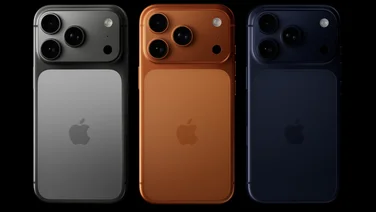 Apple iPhone 17 Pro and 17 Pro Max: Some upgrades, some downgrades Apple goes back to aluminium with its Pro series phones but boosts battery life and telephoto zoom camera quality
Apple iPhone 17 Pro and 17 Pro Max: Some upgrades, some downgrades Apple goes back to aluminium with its Pro series phones but boosts battery life and telephoto zoom camera quality -
 The iPhone 17 Air learned nothing from Samsung's mistakes The iPhone 17 Air is a beautifully skinny piece of kit – but it still hasn’t fixed my key problem with these ultra-slim smartphones
The iPhone 17 Air learned nothing from Samsung's mistakes The iPhone 17 Air is a beautifully skinny piece of kit – but it still hasn’t fixed my key problem with these ultra-slim smartphones -
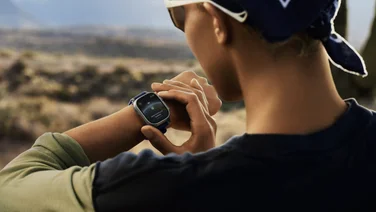 Apple Watch Series 11, Ultra 3 and SE 3 announced with 5G and blood pressure monitoring The new Watch Series 11, Ultra 3 and Watch SE are here - with one key health-tracking feature finally making its debut
Apple Watch Series 11, Ultra 3 and SE 3 announced with 5G and blood pressure monitoring The new Watch Series 11, Ultra 3 and Watch SE are here - with one key health-tracking feature finally making its debut -
 Apple AirPods Pro 3 get biggest overhaul yet The AirPods Pro 3 get a huge overhaul with better sound quality and ANC, a new design with a better fit and heart rate sensors
Apple AirPods Pro 3 get biggest overhaul yet The AirPods Pro 3 get a huge overhaul with better sound quality and ANC, a new design with a better fit and heart rate sensors -
 Haier leans into AI at IFA 2025 with new large home appliances From washing machines that learn your preferences to smart fridges that know what they’re holding, Haier’s new white goods range is all-in on AI
Haier leans into AI at IFA 2025 with new large home appliances From washing machines that learn your preferences to smart fridges that know what they’re holding, Haier’s new white goods range is all-in on AI -
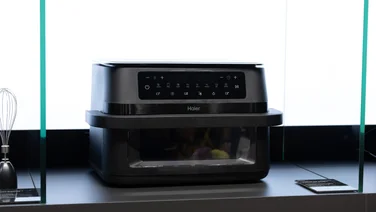 Haier’s upcoming TV range could be a game changer for the high-end market After a long wait, it looks like Haier is ready to bring more of its small home appliances to the UK market
Haier’s upcoming TV range could be a game changer for the high-end market After a long wait, it looks like Haier is ready to bring more of its small home appliances to the UK market -
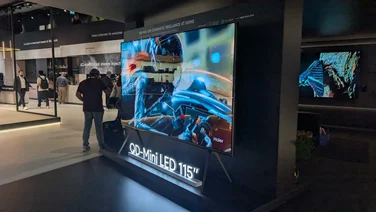 Haier’s upcoming TV range could be a game changer for the high-end market With some enormous screen sizes and the latest and best panel technology on offer, Haier is striding into the AV market with confidence
Haier’s upcoming TV range could be a game changer for the high-end market With some enormous screen sizes and the latest and best panel technology on offer, Haier is striding into the AV market with confidence -
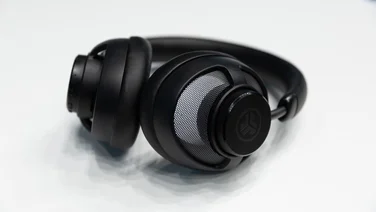 Hands on: JLab’s new Open headphones are a reasonably priced throwback I got my mitts on the new JLab Open headphones at IFA 2025 – here’s how they’re sounding so far
Hands on: JLab’s new Open headphones are a reasonably priced throwback I got my mitts on the new JLab Open headphones at IFA 2025 – here’s how they’re sounding so far -
 IFA 2025: XGIMI announces new projectors built for gamers XGIMI announces a trio of new Horizon projectors at IFA 2025 with low response times, high refresh rates and VRR support
IFA 2025: XGIMI announces new projectors built for gamers XGIMI announces a trio of new Horizon projectors at IFA 2025 with low response times, high refresh rates and VRR support -
 Samsung's portable Movingstyle TV is the perfect second TV Samsung had loads to show off at IFA this year, including a portable 4K TV and a robot vacuum that can climb stairs
Samsung's portable Movingstyle TV is the perfect second TV Samsung had loads to show off at IFA this year, including a portable 4K TV and a robot vacuum that can climb stairs -
 Eufy reveals new robovacs, security cams and more at IFA 2025 Eufy had plenty to announce in Berlin, from a new 4K security camera to a stair lift for robot vacuums
Eufy reveals new robovacs, security cams and more at IFA 2025 Eufy had plenty to announce in Berlin, from a new 4K security camera to a stair lift for robot vacuums -
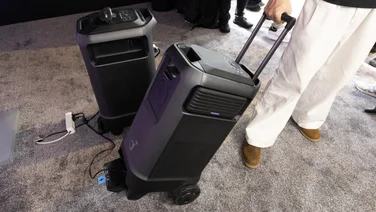 Anker lifts the lid on new Soundcore products at IFA 2025 Here’s everything Anker announced at IFA 2025 – earbuds, projectors, AI voice recorders and more
Anker lifts the lid on new Soundcore products at IFA 2025 Here’s everything Anker announced at IFA 2025 – earbuds, projectors, AI voice recorders and more -
 Acer’s Predator X27U F8 monitor can refresh at an eyeball-busting 720Hz Acer's new monitor is super slick, over specified and very expensive
Acer’s Predator X27U F8 monitor can refresh at an eyeball-busting 720Hz Acer's new monitor is super slick, over specified and very expensive